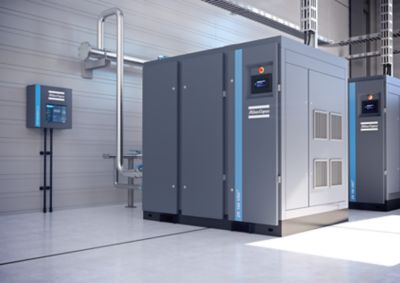How does a screw compressor work?
Here we will look a bit closer at the screw air compressor technology. What is a screw compressor and what is its basic working principle?
The screw element was first developed in the 1930s, it has a male and female rotors, the male rotor drives the female rotor if it’s an oil injected screw compressor technology; and a timing gear drive both rotors in the oil free compressor technology as both rotors will run harmonically with minimum calculated clearance between both elements. The basic principle of a screw compressor is as the male and female rotors are rotating in opposite direction they draw air in between them. As the air progresses along the rotors the air is compressed as the volume space between the rotors decreases, hence creating compressed air that is displace to the outlet. The speed of the rotors is optimised at a certain level to minimise mechanical loses (due to heat at very high speed) and volumetric losses (air losses due to very low speed). Unlike a piston compressor a screw compressor generally doesn’t have valves and has no mechanical force that causes unbalance, this means that it can work at a high speed combined with large flow rates and still be contained within a small exterior. A good example of a screw compressor that can produce large volumes of compressed air and with a small footprint is Atlas Copco’s GAVSD+ air compressors up to 75kW.
Contact Us Today
Whether you are buying a compressor for the first time, or upgrading your existing compressor, we can provide you with the best compressed air solution possible. Call us today on 1.800.667.9875 to learn more about our range. Alternatively, you can click here, fill out the form, and one of our knowledgeable specialists will get in touch with you.



